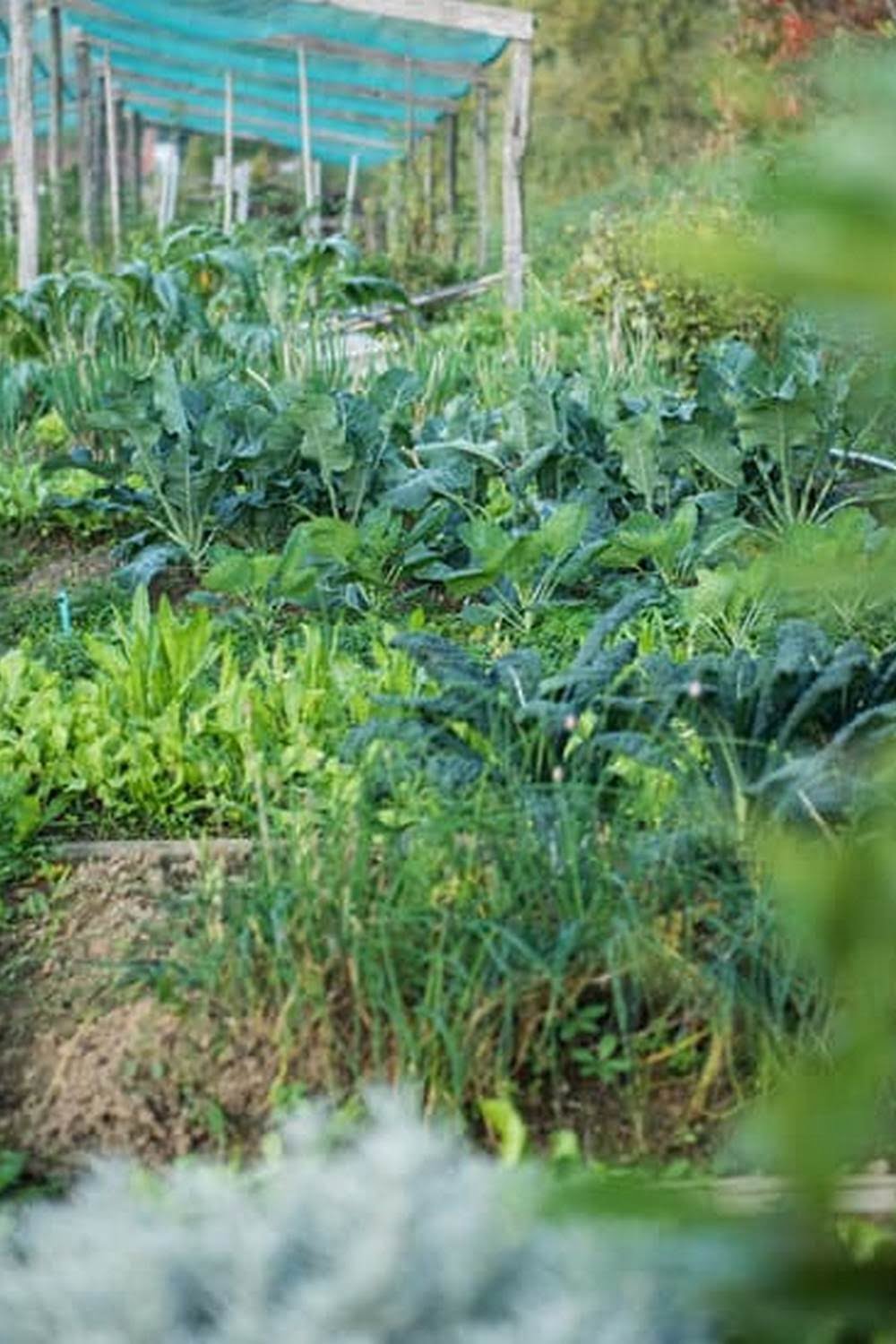Introduction
A hanging vegetable garden is an innovative style of growing vegetables in the comfort of your own home where plants are hung up from a stand, fence, wall, or from any other surface that is elevated from the ground. Hanging vegetable gardens have the advantage of saving space, creating easier access to the vegetables, and adding an aesthetically pleasing touch to your outdoor furniture. There are many advantages and benefits to planting a hanging vegetable garden.
One great perk of hanging vegetable gardens is that they free up garden space. By utilizing vertical walls and surfaces for planting, you can add more plants without using any additional land. This makes them a perfect choice for those who don’t have much garden area to begin with or simply don’t want the mess that comes with full-fledged gardening outdoors. In addition, taking your plants up off the ground allows you to enjoy longer harvest seasons as there is less risk of pests or mold due to moisture accumulation on the leaves after rain or during watering sessions.
Another benefit of hanging vegetable gardens is that they make it easy and convenient to access your plants without having to reach too far into cramped soil beds. With shorter distance between you and your veggies being at eye level (or even above) allows for incredibly convenient harvesting – especially from ground level patio settings! Furthermore, this style of gardening creates a stunning yet practical element for your outdoor furnishings, giving them more aesthetic appeal than if everything was grown on their own plane with little variation in depth of color palette – something cohesive which adds more texture throughout.
Benefits of Utilizing a Hanging Garden to Grow Vegetables
A hanging vegetable garden provides numerous benefits that make it a great option for growing vegetables. In comparison to other types of gardens, a hanging garden is much easier to maintain since it requires less physical labor to care for and harvest plants. Additionally, hanging gardens offer better air circulation as well as better protection from pests and diseases, thus resulting in healthier produce. The low cost of the planting materials and containers coupled with their space-saving capacity makes them an ideal choice for small spaces and urban gardening. Furthermore, due to its height, the hanging garden allows for more efficient use of sunlight which increases photosynthesis, ultimately boosting the productivity of the plants grown. Last but not least, setting up a hanging vegetable garden can be done without extensive knowledge or experience gardening; thus making them an accessible way to grow vegetables at home.
Preparing the Ideal Environment for Your Hanging Garden
A hanging vegetable garden is a great way to grow your favorite vegetables in a limited space. Depending on the climate, you will need to provide your vegetables with protection from the elements, helping them thrive. If your area has full sun throughout the day, you will need to plant in a location where you can build some shade, such as near trees or shrubs. If your garden gets a lot of direct sunlight during certain times of the day, installing an outdoor sunscreen, like an outdoor canopy or cloth covering, may be necessary to provide your vegetables with partial shade. Other environment factors that need consideration are soil quality and moisture; it’s important to make sure any soil used for growing vegetables is well fertilized and contains all major nutrients needed for them to reach their full potential. In addition to providing protection from the sun and choosing ideal soil quality and consistency, proper watering is also key to keeping your hanging vegetable garden properly nourished—over-watering can just as easily inhibit growth as not watering enough. Take care when establishing the perfect conditions for the success of your hanging vegetable garden: doing so will ensure beautiful and delicious harvests!
Picking the Right Plants to Grow
A hanging vegetable garden is a type of gardening where crops are grown in suspended containers, typically placed on porches, balconies, walls or gazebos. These gardens provide great yield and convenience for anyone living in small spaces as they don’t take up much room at ground level. When selecting plants to grow in your hanging vegetable garden, it is important to consider the environmental conditions you can provide. Factors such as sun exposure, temperature range and soil moisture levels should be taken into account when deciding which vegetables to plant. Sun-loving vegetables such as tomatoes, peppers and cucumbers typically require six hours of direct sunlight per day and warm temperatures between 65 and 80 degrees F during their growing season. Leafy greens such as lettuce, kale and spinach prefer cooler temperatures between 45 and 75 degrees F and indirect light throughout the day. Soil also needs to have adequate drainage with a pH range of 6-7 depending on the crop you are attempting to grow. To get the maximum yields from your new hanging garden it’s important to pick varieties that will thrive in your specific space and provide sufficient nutrients through fertilizers or composts. Finally, be open to experimenting with different varieties of vegetables, herbs or even flowers in order to optimize the potential of your hanging vegetable garden!
Maintaining Your Hanging Vegetable Garden
A Hanging Vegetable Garden is a great way to make the most of limited space. They are typically built by suspending something such as a recycled wood pallet or an unstained piece of fencing from a sturdy post or wall, and then planting vegetables in pots or bags within the structure. Not only does this visually enhance your garden and home, but it also harvests bountiful amounts of fresh fruit and vegetables. To ensure your Hanging Vegetable Garden remains healthy and strong for years to come, there are some basic steps you can take to maintain it.
First and foremost, it’s important to regularly check the soil nutrition to ensure optimal vegetable growth. A good balanced mix of products suitable for soil health should be included in your garden. You will also want to water your hanging vegetable garden fairly often, ensuring each individual pot has enough moisture but not too much that causes water-logging. Additionally, it’s important to prune any plants that have grown too far over the sides before they grow out of control, as well as disbudding any buds developing in order to get better yields from less vigorous plants with bigger fruits/vegetables. Finally, pests should always be managed with organic sprays specifically designed for organic gardening or natural pest traps like yellow sticky fly strips placed around the area. Doing so will help protect the veggies grown within your Hanging Vegetable Garden against damage from harmful insects and animals.
Potential Problems and How to Solve Them
A hanging vegetable garden is a great way to make use of small spaces and take advantage of vertical growing. However, set up challenges can present problems for the amateur or experienced gardener alike. Several potential issues that come with a hanging vegetable garden include light exposure, temperature control, and adequate soil drainage.
Light Exposure: A key part of creating a healthy crop is proper light exposure. The closer placement of hanging vegetables increases the risk of shade from other vegetables blocking out light exposure. To combat this issue, utilize large cages to increasingly increase the space between vegetables to ensure they each receive enough sunlight. Additionally, look into using grow lights throughout stronger sunlight hours if natural daylight is limited.
Temperature Control: Keeping temperatures within ideal growing ranges can be tricky in small spaces and in hanging gardens. Investing in an outdoor thermometer allows you to monitor environmental changes throughout ideal growth times and shelter plants if needed. If unable to find alternate coverings then create makeshift ones by stringing a sheet or blanket across your row if necessary during extreme weather seasons.
Soil Drainage: Ensuring that soil drains properly keeps moisture under control since too much water can cause root rot or even suffocate plants from lack of sufficient oxygen reaching them as well as oversaturation. Be sure that your planters or baskets use holes for effective drainage so water does not pool below the surface following heavy rains or waterings. Using layers such as gravel to give direct access to water beneath plant roots also helps with drainage issues versus simply place watering on top soil alone which leads to quicker excess runoff.
Finale
Growing a hanging vegetable garden is a great way to add yield and beauty to your garden. A hanging vegetable garden offers benefits that traditional ground-level growing does not provide. Consider the following advantages:
• Space Saving: Having a convenient, smaller vertical garden can maximize the use of space in your home. Your growing area will be condensed while still allowing you to grow an abundant selection of vegetables — no more vast areas of land taking up room in the backyard.
• Ease of Access & Maintenance: With the convenience of veggie plants being right at eye-level, it’s easier to spot any pests or weeds and take care of them quickly, ensuring your vegetables are well cared for with minimal effort. Performing routine checks is also much easier with having plants within reach.
• Increased Control Over Environment: With a controlled environment created by hanging planters, you’re able to control the amount of sunlight and water that each individual plant gets. This ensures healthy growth with radiant colors and larger yields than what could be achieved on the ground level from potential uneven sunlight exposure, rainfall etc.
• Eco-Friendly: Ditching the standard raised bed helps keep pesticides and soil far away from living organisms like bees, earthworms, frogs etc., making it an eco-friendly choice for both insects and mammals alike. The condense yet efficient growing beds also help conserve valuable natural resources with less total water intake due to effective irrigation systems coupled with meticulous monitoring by way of ‘plant check’ sheets/apps etc., during times of limited water availability in some parts of the world.
Growing a hanging vegetable garden provides numerous benefits such as space savings, easier maintenance access and increased control over environmental conditions which all contribute to healthier produce while being kinder to the environment too! Therefore creating a hanging veggie patch is great alternative or addition to existing ground level gardens so why not give it try today?

If you’re looking to get into vegetable gardening, or are just looking for some tips on how to make your current garden better, then you’ve come to the right place! My name is Ethel and I have been gardening for years. In this blog, I’m going to share with you some of my best tips on how to create a successful vegetable garden.





